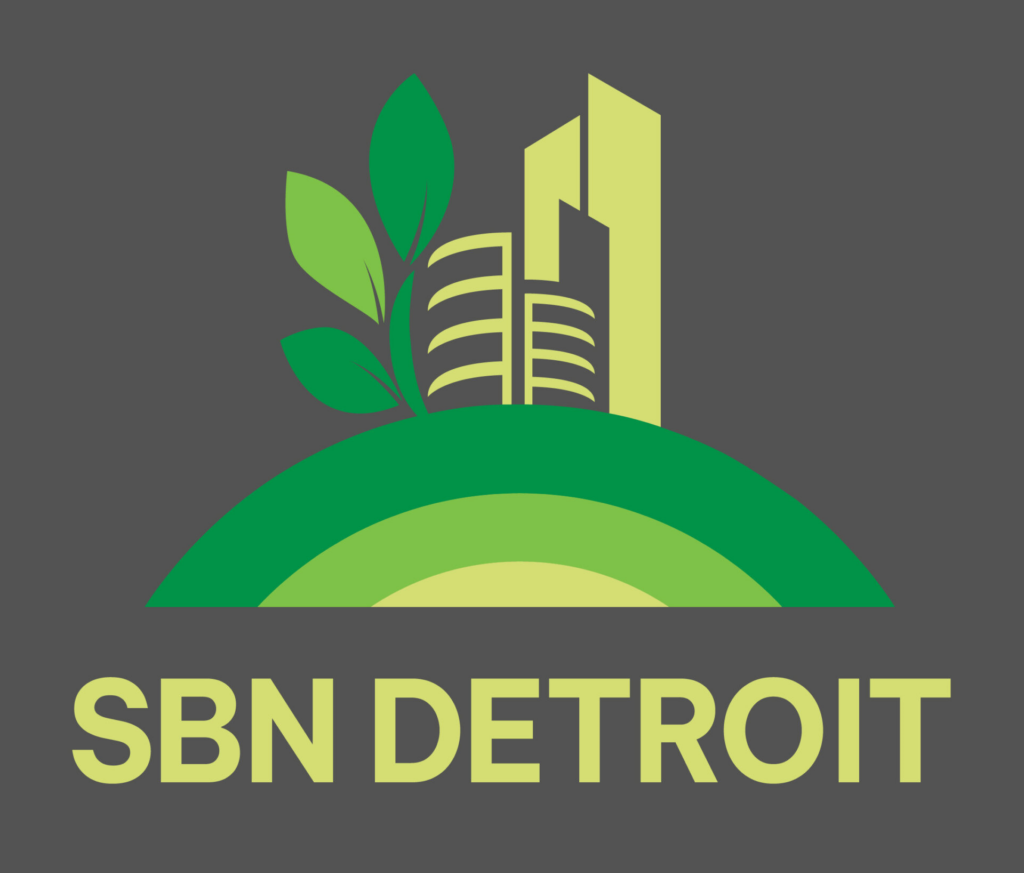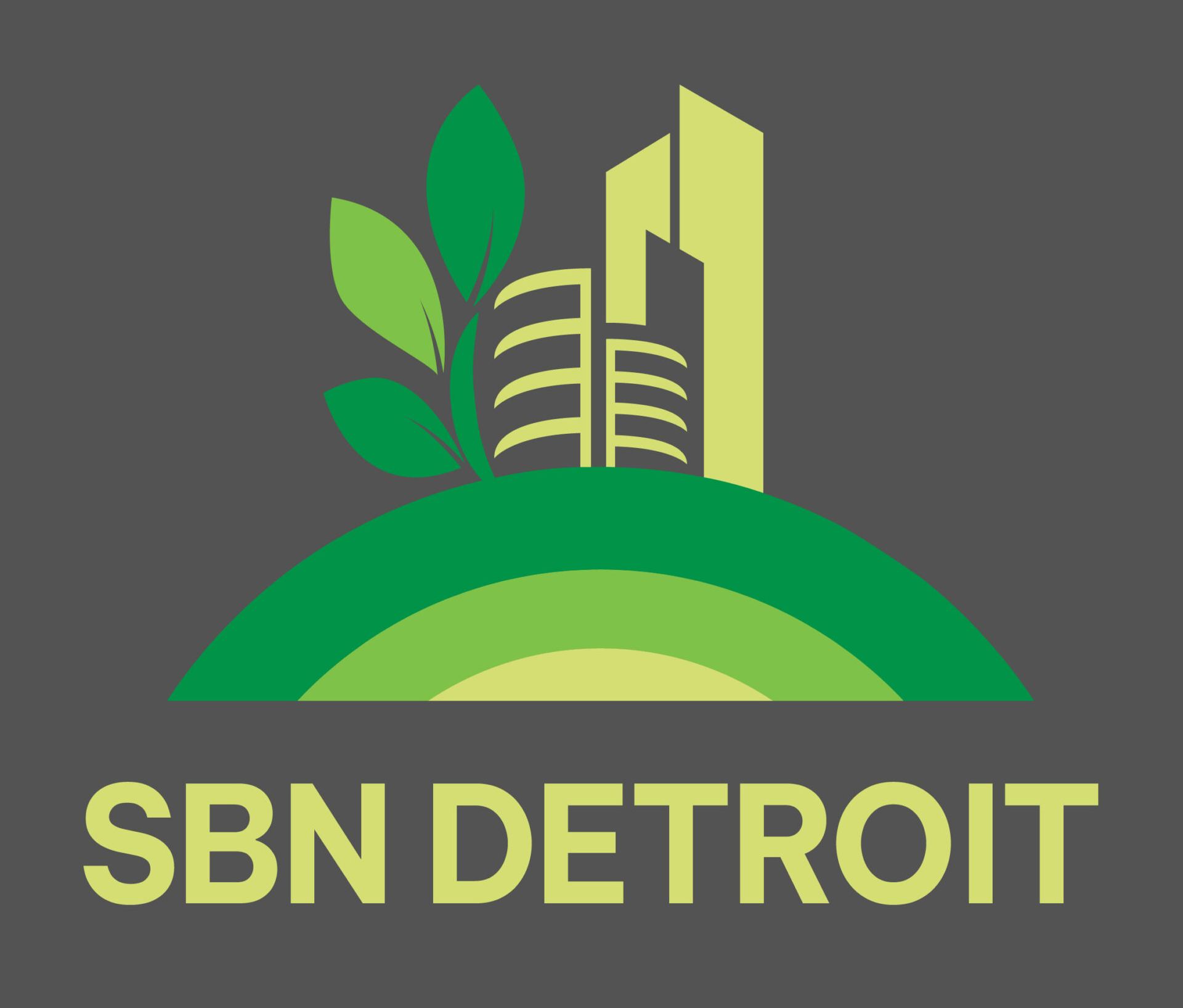Building with Purpose
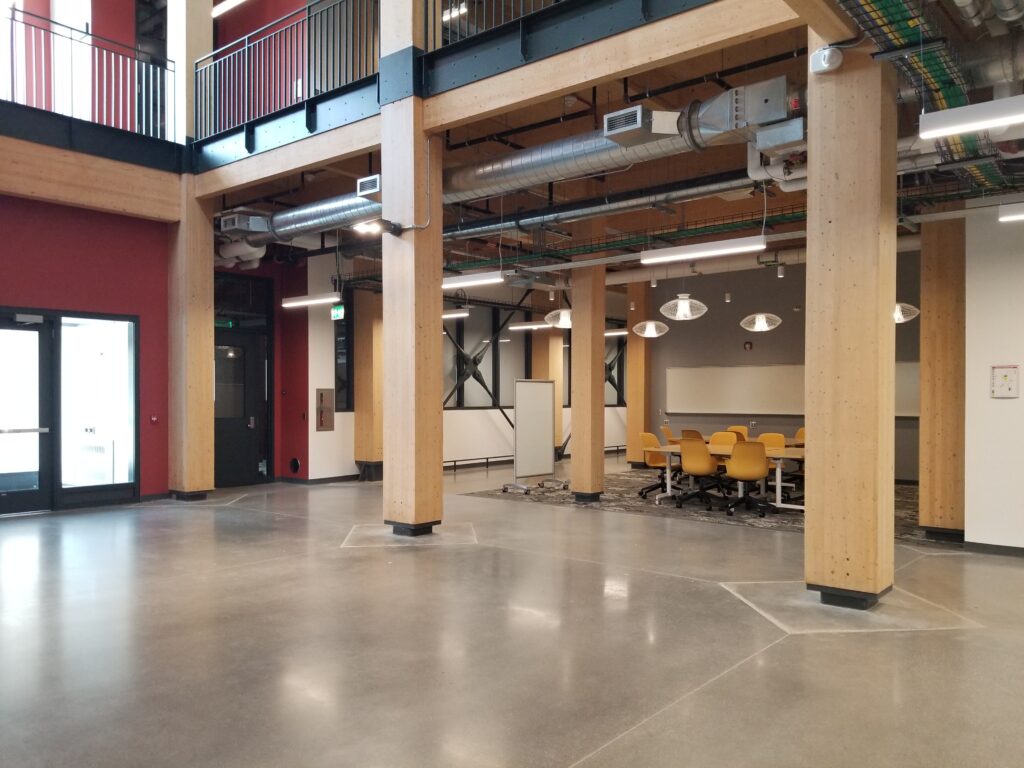
MassTimber@MSU is a cross-disciplinary initiative at Michigan State University dedicated to advancing mass timber construction and manufacturing in Michigan. Collaborating with partners across construction, forestry, development, and state agencies—including the Michigan Department of Natural Resources—the initiative leverages MSU’s land-grant mission through research, teaching, stakeholder engagement, and policy development to build a sustainable mass timber future for the state. SBN Detroit interviewed Sandra Lupien, Director of MassTimber@MSU, about the environmental, economic, and design implications of mass timber and the growing momentum behind the material in Michigan and beyond. Q: What is the MassTimber@MSU initiative, and what inspired its creation? A: MassTimber@MSU is a collaboration across MSU’s School of Planning, Design and Construction, Department of Forestry, and MSU Extension. We work with partners across the state—including construction professionals, foresters, community and development organizations, and state agencies like the Michigan Department of Natural Resources—to advance mass timber construction and manufacturing in Michigan. Our approach reflects MSU’s land-grant mission: research, teaching and curriculum development, stakeholder engagement, and policy exploration that could support mass timber adoption. Since I started in this role in July 2021, momentum is growing. There are now more than 65 mass timber projects in the pipeline in Michigan. The STEM Teaching and Learning Facility on MSU’s campus, which is the second building in the state to use cross-laminated timber (CLT), helped demonstrate what’s possible. And we’re now seeing serious interest from prospective producers who are looking to locate in Michigan. Q: What are the environmental benefits of mass timber in terms of sustainability, carbon reduction, and climate resilience? A: This is exactly what drew me to mass timber. It’s a tool in our toolkit to reduce carbon emissions, support sustainable communities, and help foster healthier, more resilient forests. Globally, the built environment accounts for about 39% of greenhouse gas emissions—28% from building operations and 11% from construction materials like concrete, steel, and glass. These materials are essential, but they’re energy-intensive to produce. Wood, by contrast, is a renewable resource that stores carbon. When we use wood in construction, we’re not only lowering a building’s embodied carbon footprint—we’re also locking that carbon into the structure itself. At MSU, the STEM Teaching and Learning Facility contains roughly 3,000 cubic meters of mass timber, which stores about 1,856 metric tons of carbon dioxide equivalent. That’s comparable to removing the emissions from 4 million miles driven by an average car. Mass timber buildings, in this way, become carbon storage banks. On the forestry side, we know that many forests evolved with low-intensity natural fires that helped maintain healthy densities. Today, many of our forests are overcrowded, which makes them vulnerable to pests, disease, and catastrophic wildfire. Because of past logging practices and fire suppression, we have an obligation—and opportunity—to steward forests more sustainably. When we do that, we can produce wood that extends the climate benefits of trees, especially if that wood would otherwise decay or burn. Q: How are MSU students and faculty engaging with mass timber—from design to research to real-world application? A: There are three main academic areas deeply engaged with mass timber: Construction Management, Forestry and Biochemistry, and Civil and Environmental Engineering. We have undergraduates, master’s students, and Ph.D. candidates working with faculty on projects across those disciplines. In Construction Management, Professor George Berghorn is developing mass timber curriculum modules that can be used nationally in engineering and construction programs. In Forestry, Professor Mojgan Nejad is doing incredible work on developing bio-based adhesives and coatings for use in mass timber—replacing fossil-fuel-based polyurethane with lignin-based alternatives. She’s actively working toward commercialization. We’ve also done economic research to analyze supply chains and survey demand, which helps inform developers and policymakers. And beginning Spring 2025, we launched a new course focused entirely on mass timber, led by Dr. George Berghorn and tailored for both undergraduate and graduate students. Q: From an economic perspective, how could mass timber help revitalize Michigan’s forestry sector and rural economies? A: We’ve modeled the economic impacts of launching a 50,000-cubic-meter-per-year mass timber manufacturing facility in Michigan. The results are exciting: such a facility would contribute $152 million to the state’s GDP and support 318 jobs. There’s a strong need to find new uses for Michigan wood. With the paper industry in decline and other traditional markets shifting, mass timber presents an opportunity to create high-value products that support Michigan jobs and rural economies. Q: How does the initiative align with Michigan’s climate goals or sustainable development strategies statewide? A: The MI Healthy Climate Plan, which outlines the state’s climate goals, directly mentions mass timber three times—as a key strategy for reducing emissions in the built environment and managing natural lands sustainably. The City of Lansing’s Sustainability Action Plan also highlights mass timber, and East Lansing has even amended its zoning ordinance to incentivize developers to use mass timber and build LEED-certified projects. It’s encouraging to see this kind of policy support—it sends a signal that mass timber can and should be part of Michigan’s climate solution. Q: What does Michigan’s existing forest resource look like, and how does sustainable forestry tie into your vision? A: Healthy, resilient forests are the foundation of everything we do. In Michigan, about 70% of our forest resource is hardwood and 30% is softwood. Most mass timber products currently certified for use in the U.S. are made from softwoods. That said, Michigan does have suitable softwood species. For example, red pine was certified for structural use because the Michigan DNR prioritized using Michigan wood in a customer service building in the Upper Peninsula. That’s a great example of state leadership driving local wood utilization. As the industry evolves, there’s potential to expand the species we can use in mass timber production. Q: Looking ahead five to ten years, what’s your boldest vision for the impact of the Mass Timber Initiative? A: I’d like to see commercial buildings—everything from multifamily housing to community centers to industrial facilities—considering mass timber from the outset, not as a novelty but as a viable, mainstream option. Mass timber
Aligning Business with Sustainability

Comerica Inc. was founded in Detroit in 1849 and remains rooted in Southeast Michigan, even as its headquarters now sit in Dallas. With 4,300 employees in the region and a strong presence across the state, the bank continues to play an active role in environmental responsibility and community impact. SBN Detroit interviewed Scott Beckerman, Senior Vice President and Director of Corporate Sustainability, about the bank’s climate strategy, operational footprint, and the role financial institutions play in driving sustainable progress. Q: Comerica has deep roots in Detroit, even as its headquarters are now in Dallas. How does that legacy influence the bank’s sustainability priorities in Southeast Michigan and beyond? A: Comerica is really proud of our 175-year legacy in Detroit, and over half of our employees are here. As a lifelong resident of the Detroit area myself, I recognize the unique environment of this region. So naturally, there is a certain connection to our desire to protect and preserve this special environment. But we also know that environmental issues aren’t just local – they are global in their nature. I think the connection here is that we understand the importance of issues in the near-term and at the local scale but also recognize the importance of the global scale. For issues like climate change, that means our future success depends on the actions we are taking today, both here in the Detroit area and across the country. Q: What are the most pressing environmental or climate-related risks Comerica is working to address within its operations and client services? A: Our commitment is around three main areas: Reducing our own environmental footprint, embedding sustainability into our business, and supporting our customers’ needs. For our own footprint, we are focused on reducing water consumption, waste generation, resource consumption, and greenhouse gas emissions. Since 2012, we’ve reduced our GHG emissions 61%, – on our way to a 65% reduction target by 2030 and moving toward our north star of 100% reduction by 2050. For water, we’ve decreased our consumption by 48% and have also seen a 41% reduction in waste. On the resource consumption side, our focus is paper usage and since 2012 we’ve decreased that by 89%. For our customers, we want to ensure they have access to the financial products and services they need to address the challenges they face. Maybe for a homeowner, that is a home equity loan to make their home more energy efficient or add solar to their roof. For a business, that may mean providing the financing to upgrade the efficiency of their equipment or capital improvements to a building to make it more climate resilient. Q: Comerica has made commitments to reduce operational emissions and increase energy efficiency. Can you walk us through the key strategies being used to reach those goals — and how success is measured? A: Our primary drive has been a focus on energy efficiency. With roughly 400 buildings in our portfolio, this is no easy task, and no two buildings are alike. We’ve deployed a host of efficiency measures from lighting to advanced building controls to really working on driving down energy consumption, which is the largest contributor to our greenhouse gas emissions. The other important thing is to right-size our real estate footprint while still serving our customer needs. A lot has changed with the digitalization of banking, and we simply don’t need the same amount of space that we needed in the past. So being smart about the amount of real estate we occupy has also helped us drive down our overall energy consumption. At the same time, we recognize that the shift to a digital world is not without its own set of issues, including GHG emissions, so we work with providers to ensure the majority of our technology and data center needs are powered by renewable energy. We’re also investing in renewable energy solutions across our footprint, focused on local impacts, including piloting solar projects and REC (renewable energy certificate)-backed electricity programs in Michigan and Texas. Q: What role does Comerica’s sustainability team play in engaging business units across such a large organization? How do you ensure consistency in implementation? A: First, we center our sustainability program on value creation. What I mean by that is that our sustainability initiatives need to be generating value by reducing risks or costs, spurring innovation, and supporting revenue growth. If we do all that well, it enhances our reputation and brand which delivers additional value. While it may be cliché, I think it’s true that sustainability really is the ultimate team sport. We are successful with our programs because we have the buy-in and support from colleagues across our organization. We also support sustainability through colleague education, regional Green Teams, and volunteer-driven community programs. Q: In your view, what’s the biggest challenge for banks — especially legacy institutions like Comerica — when it comes to embedding sustainability into the core business model? A: For any business, there are a ton of ever-evolving business priorities, based on things like the market, customer needs, regulatory requirements, and changing technology. So, if you approach sustainability as an add-on to the traditional business priorities, then it can get pushed aside by pressing traditional business needs of the moment. But if you embed sustainability into your core values and it becomes a part of how you do business, then it becomes a long-term source of business stability. At Comerica, we have a core value of being “A Force For Good,” which means we’ve worked to embed sustainability into how we do business. Since the establishment of our sustainability office in 2008, that means we’ve significantly reduced our environmental footprint and delivered tens of millions of dollars of cost savings. Q: Where do you see the greatest opportunity for Comerica to lead — whether through lending practices, investments, community partnerships, or internal operations? A: Our length of time in this space has given us a real advantage in terms of long-term impacts. During that time,
Cascade Engineering – Designing Toward Function, Planet, and People
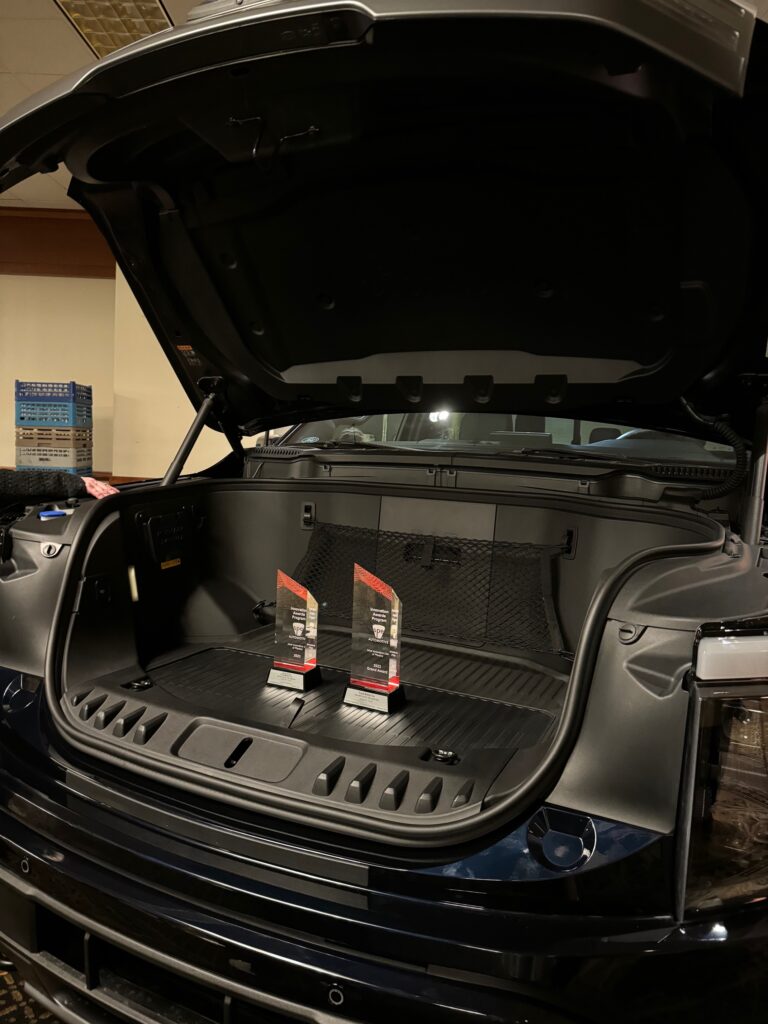
Created in 1973, Cascade Engineering specializes in large-part plastic injection molding. The second-generation, woman-owned company was recognized at the 2023 Society of Plastics Engineers Automotive Innovation Awards for its work with Ford Motor Co. on the Mega Bin/Frunk for the Ford F-150 Lightning. Frunk is a portmanteau word for a trunk on the front of a vehicle. In doing so, it converted the front trunk from a compression-molded painted sheet-molding compound to a large Class A composite injection-molded part and is currently one of the industry’s largest injection-molded product pieces. SBND interviewed Christina Keller, CEO and chair of the Grand Rapids-based Cascade Engineering Family of Cos., about the frunk’s impact on sustainability, creating circular economy solutions, and evolving trends in the industry. Q: How does sustainability stand out within Cascade Engineering? A: Cascade is a second-generation family business that is woman-owned and sustainable. We are celebrating 50 years as a triple-bottom-line company. We are a certified B Corp, ISO 14001 certified and LEED certified. Our focus is on innovative products and solutions in manufacturing and we supply to the furniture, automotive, and waste industries. Q: What role does sustainability play in the company? A: We have been organized as a triple-bottom-line – people, planet, profit – company since our inception. On the people side, we work heavily with returning citizens and also on initiatives to reduce the state of recidivism in Michigan. On the planet side, we’ve been zero waste to landfill since 2012 and have innovated a number of projects in the circular economy. Obviously, we must be profitable to engage in all these activities. Q: Can you tell us more about the frunk? I believe this is currently the industry’s largest injection molded product piece. What aspects of this impact sustainability? A: First, by eliminating the paint process there is a significant reduction of Volatile Organic Compounds (VOCs). Second, it’s more fuel efficient due to decreased product weight. Next, the manufacturing process has been streamlined to reduce energy. And finally, it’s more recyclable in that the end-of-life material can be recycled into a variety of products. Q: How do you think this impacts Southeast Michigan? A: The paint process takes place in Ford facilities, so eliminating this directly reduces VOCs in Southeast Michigan. The collaboration between Cascade and Ford serves as a promising example of potential collaborations between Tier One suppliers and manufacturers in Southeast Michigan. There are many opportunities for partnerships toward a better environmental outcome. Q: In what other ways does the frunk’s design and manufacturing process impact sustainability? A: We have eliminated the environmental burden of paint in the Frunk’s design. Additionally, the secondary routing of holes has been eliminated, reducing process steps and allowing us to produce a higher quantity of parts in less time. The seal interfaces are integrated into the assembly station for further efficiencies, and the material used is recyclable. Q: The Frunk process utilizes a 4,000-ton injection press and a tool equipped with a 16-drop hot runner system to mold these parts. Is this typical? A: No. The use of a 4,000-ton injection press is unique in the industry. The capital required to purchase this equipment poses a significant barrier for most companies. Additionally, the specialized human capital needed to operate such a large press is rare. Q: Is the new frunk product in production? A: Yes. If you buy a Ford 150 Lightning today you will get one of these pieces in your vehicle. It is fully in production and we are looking at more innovations currently. Q: What new innovations are you working on? A: Additional frunks in the near term. Before electric vehicles, we did not have the space in the front of vehicles to create a front trunk. Now, with increased demand for EVs, it’s a growing area and we are looking at manufacturing a number of additional front trunks. Q: Does being in Michigan in particular post challenges or opportunities in terms of your work on the sustainability front? A: There is an excellent network of manufacturers in Michigan – especially Southeast Michigan – that allows us to be truly innovative. A challenge is finding talent. This sector overall currently has 516,000 job openings and over the next decade is projected to reach 3.8 million. Another challenge we face is incarceration. The U.S. has one of the highest incarceration rates, with 1 in 100 adults in jail. We see returning citizens as a valuable pool of talent that can be trained and integrated into the workforce. This presents a unique opportunity for Michigan, as the state is not attracting enough new residents, and only 50% of college graduates stay here. Additionally, while college graduates remain in their first job for an average of two years, returning citizens tend to stay for seven years. This approach offers an interesting solution to addressing the talent gap in Michigan. Q: How do you see industry trends evolving? A: I see a lot of work in the AI space and Industry 4.0 focused on innovative manufacturing methods. There is a noticeable trend towards reshoring, driven by the constraints observed in the global supply chain during the pandemic. Companies are now striving to establish a local footprint, which also helps reduce the carbon footprint from transportation. Additionally, significant efforts are being made to maximize package density for more efficient shipping and transportation. Regarding talent attraction and retention, we have more 65-year-olds in the U.S. than ever before, while our younger demographic is declining. Q: How is Cascade adapting to the changes in the industry? A: We are constantly scanning the horizon to look at trends. On the sustainability side, we are developing an ecosystem of recycled plastic sources to enhance our clean stream of recyclable materials. We are looking at streams from medical waste that could be used, and post-consumer and post-industrial applications. We are also working on additives to use in our products such as hemp fibers, dust waste, and trash materials. And finally, we are working with
Newly Developed MiSide – Working to Build Sustainable Neighborhoods in Detroit
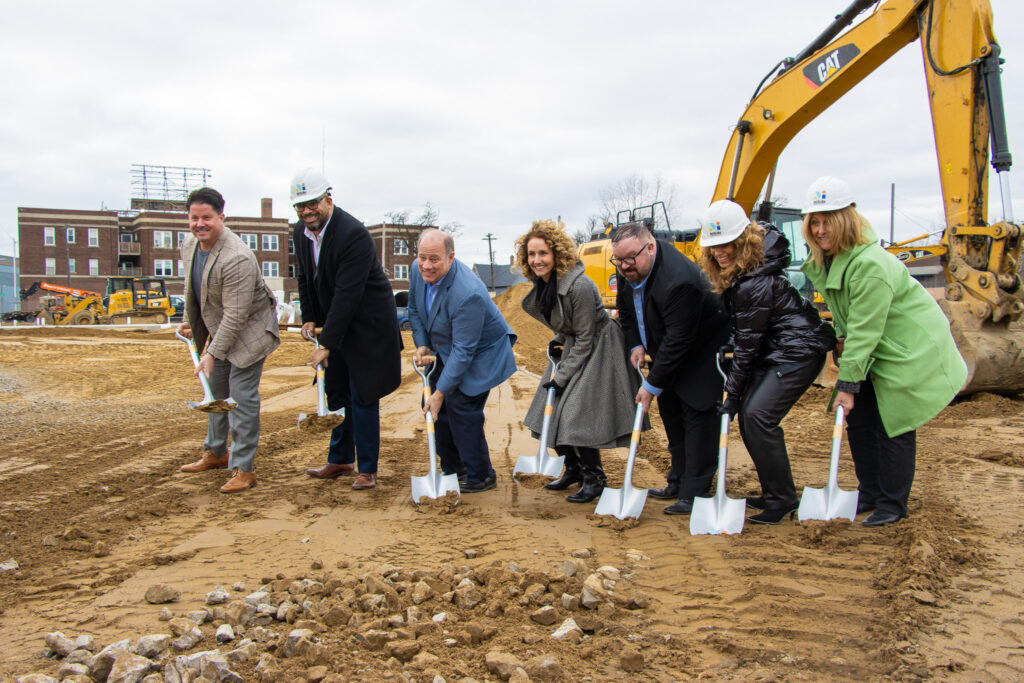
The MiSide Community Impact Network’s mission is to ensure that children, individuals, families, and communities have access to great healthcare, quality education, a comfortable home, and the money they need to build the life they desire. As such, their work is steeped in sustainability. SBN Detroit interviewed Timothy Thorland, executive director of MiHousing, and Hector Hernandez, executive director of MiWealth, to find out more. Q: What is the impetus behind the MiSide Community Impact Network? Thorland: It was formed (in late 2023) by two human service organizations in metro Detroit – Southwest Solutions and Development Centers Inc., which recognized that by combining they could offer a broader range of services to more low-to-moderate income families than either could alone. More importantly, both organizations understood that the families who seek them out for support are frequently facing multiple challenges and that a single organization would not be able to meet all of those needs. The service array now represented under MiSide can help with many of the most frequent challenges our families face – access to quality behavioral and physical health care, finding safe affordable housing, enrolling children in safe and affordable childcare, and gaining the skills to earn a good living. Q: MiSide’s mission is to provide individuals and communities with equitable access to health, education, self-sufficiency, and wealth accumulation opportunities. How do you think this mission plays out in terms of sustainability in the communities where you do your work? Thorland: One of the greatest predictors of sustainability for a community is stability in the community, and stability can’t happen for families unless the components outlined in MiSide’s mission are accessible to them. The way we’ve seen sustainable community improvements play out in our neighborhoods is through concentrated and coordinated services that start to transform a handful of families who reside in the area. As their circumstances improve, they stay in their neighborhood only if the environment around them begins to improve as well, and as long as they can continue to find what they need near them. So, working as part of the community to improve the housing stock, create anchors of affordability, avenues for homeownership, and wealth building must go hand-in-hand with the other services and supports we provide. With this collective approach, over time, whole neighborhoods and communities start to transform. Q: How does MiHousing lift the economy and facilitate equity and wealth building? Thorland: Over the past 25 years, MiSide Housing and its subsidiaries have developed more than 800 rental housing units, rehabilitated more than 1,000 single-family homes for homeownership, built and sold more than 100 homes for homeownership, facilitated scores of minor home repairs, developed more than 150,000 square feet of neighborhood office and commercial space, and originated more than 300 first or second mortgages, and beautified or improved more than 100 vacant land parcels – all together well more than $325 million of production. While our work has been predominantly in the affordable rental market, since 2011 we have been more actively engaged in single-family home ownership: First in the foreclosure/real-estate-owned market as a purchaser/rehabber/reseller of abandoned homes throughout Southeast Michigan; and, second, as a facilitator of down-payment assistance mortgages in partnership with NeighborWorks and Wells Fargo. While all of these programs contributed mightily in their own way to the economy, equity and wealth building most notably would be our third example. We have facilitated the transition of 53 tenants to becoming homeowners providing transactional guidance, support, homebuyer education, and a mortgage to help them achieve the dream of homeownership. Q: There is a project in the East Chadsey Condon neighborhood that just broke ground. What is the desired impact there? Thorland: The production of affordable housing is one of the top priorities in the state. In the Michigan Statewide Housing Plan released in 2022, the plan identified a need for 75,000 additional housing units statewide – 39,000 of those identified as affordable housing units. More specifically, the development of affordable housing in the East Chadsey Condon (ECC) neighborhood is important because growth, expansion, and housing costs in the downtown and near-western downtown markets have risen dramatically and continue to push westward. In the ECC market area, more than one-half of all households have a total household income of less than 50% of the area median income. As many as 48% of renter households are considered ‘cost-burdened’ meaning they pay more than 30% of their income toward housing expenses. Nearly 40% are at or below 30% of AMI. The explosive growth emanating out of the Corktown area will only fuel additional demand and increases in housing costs. MiSide is committed to encouraging the revitalization of ECC as a neighborhood of opportunity. The creation and provision of affordable rental housing in ECC is just one important component of our overall community development effort. Through internal programs and resources, as well as nine partnership organizations, we aim to improve the overall quality of life for the neighborhood – positive impacts that encompass health (physical, behavioral, and child development), wealth (workforce development, homeownership education, financial education), housing (multi- and single-family, affordable and market, rental and ownership), and general community development (home improvement, beautification, community programs, parks, and green space, energy, and infrastructure). Q: How does the work you are doing through MiHousing impact businesses in Southeast Michigan? Thorland: While MiSide Housing is primarily devoted to the promotion of affordable housing and community development in Southwest Detroit, our work – often in partnership with others – reaches across the city of Detroit and inner ring suburbs. On the front end, we have 300 units under development and/or construction. Our work with the traditional cadre of real estate development industry professionals and general and subcontractors includes scores of companies contributing to the stability of the industry. On the back end, we own and operate more than 600 units. All of these units/projects, of course, have multiple productive relationships with businesses and suppliers in the operation and maintenance of the units. Additionally, while about 1/3 of our tenant
Implementing Sustainability Initiatives is Crucial in Today’s Business World
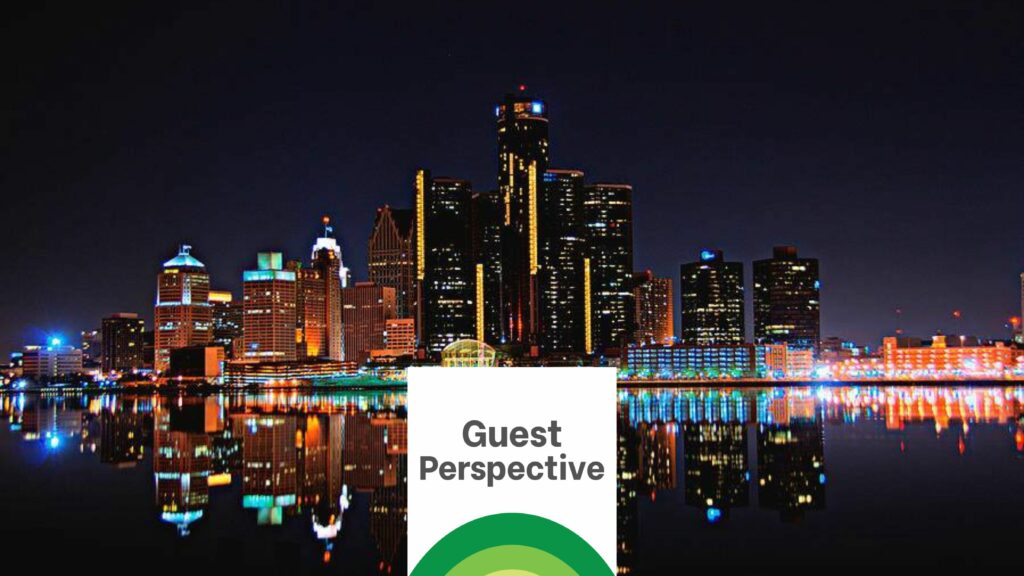
CONNIE LILLEY IS THE EXECUTIVE DIRECTOR OF DETROIT 2030 DISTRICT You may be missing out on growth opportunities if you’re a business that has yet to jump on the sustainability train. I’m sure you’ve heard the word “sustainability” before, but what exactly does that mean to your business? That’s the question all individual companies need to ask. PEOPLE, PLANET, AND PROFIT The well-known triple-bottom-line theory is just one of many theories floating around today. But, the most basic question that all businesses need to ask is: How is my company benefiting People, Planet, and Profit? No matter what program, theory, or process a business intends to follow, there’s one sure thing – getting started can be the hardest part. But, if you are a company that is just getting started, it’s easier than ever to create a sustainability plan for a business. Companies no longer have to reinvent the wheel when writing a sustainability plan. Other businesses have created many programs and published sustainability plans to help lead the way and share best practices. While sustainability means different things to different organizations, there’s no denying that implementing sustainability initiatives can help a company’s growth in more ways than just environmental stewardship. While that is the main focus of sustainability, let’s not forget about the economic benefits as well. A company that reduces utility costs can put that savings into hiring more employees, spurring economic development. Sustainability plans should be a part of any business operational plans. Here are some of the benefits of getting started. SAVE MONEY ● Reduce the cost of transportation to and from landfills ● Reduce your operating expenses when you use less energy and water ● Reduce your stormwater runoff fees Reduce your company’s carbon footprint ● Lowering greenhouse gas emissions by reducing energy and water consumption ● Installing gardens or green roofs to manage stormwater runoff ● Reduce transportation emissions to and from landfills and local traffic Increase your revenue: ● Increase positive public relations and marketing by promoting your company’s sustainability efforts ● Increase sales by offering sustainable products to your customers ● Create a healthy building to attract quality tenants to increase rent ● Provide a healthy environment for employees and thereby reduce sick days The steps described above are not always easy to implement. If you own or manage a building, creating a high-performance building takes focus and commitment. Organizations such as 2030 Districts are forming across North America to assist facility managers and owners with tasks such as tracking and managing water and energy consumption, offering educational opportunities, sharing best practices, and more. Most 2030 District programs are free or cost-effective compared to hiring a consultant or company to assist. For more information and to find a 2030 District in your city, visit www.2030districts.org. Be sure to subscribe to our newsletter for regular updates on sustainable business practices in and around Detroit.
Small Business Role in Sustainability is Largely Untapped
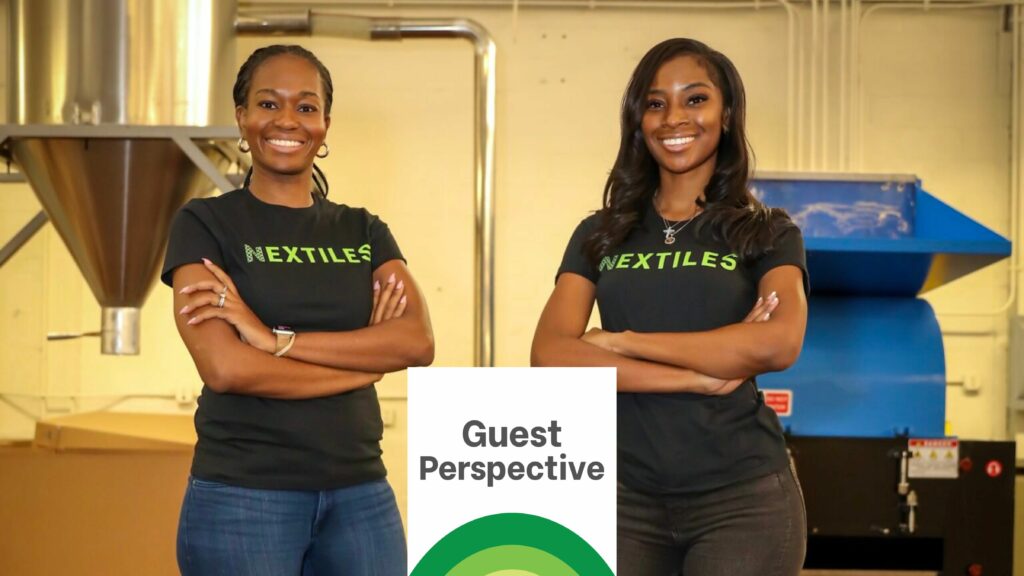
WAFA DINARO, EXECUTIVE DIRECTOR, OF THE NEW ECONOMY INITIATIVE, AND A LEADERSHIP COMMITTEE MEMBER FOR SUSTAINABLE BUSINESS NETWORK DETROIT During an internship with a recycler in New York in 2020, entrepreneur and environmental scientist Madeline Miller watched as the waste materials from textile companies were being processed in the facility, and something entrepreneurial clicked. In the “waste,” she saw home-building insulation that could be reused back home in Michigan while increasing energy efficiency in Detroit homes. From there, NexTiles was born, a Detroit-based textile recycling company that produces EcoBlow – a nontoxic, eco-friendly building insulation made entirely of recycled pre-consumer fabric from manufacturers, particularly automotive interior suppliers, and fashion designers. While her experience reflects the role small businesses can play directly in terms of creating eco-conscious products, every small business, no matter their product or service, can implement eco-friendly business practices. Unfortunately, many of the same challenges that prevent small businesses from thriving in general – limited access to capital and lending; a lack of technical assistance in finances, marketing, and business planning; and the inability to tap into a business support network for grants and resources – will prevent them from reaching their full potential in sustainability. Yet, nearly all the factors that help small businesses drive economic resilience position them to be a transformative force in sustainability. SMALL BUSINESS DRIVES SUSTAINABLE ECONOMIC RESILIENCE First, there are the sheer numbers. There are 33.2 million small businesses in the U.S. accounting for 99.9% of all businesses. They make up our largest employer group and accounted for almost two-thirds – or 17.3 million – of all jobs created from 1995 to 2021, according to the Small Business Administration. And they continue to grow, in 2022, there were more than 5.1 million new business applications filed. Second, small businesses are nimble and can move quickly to drive innovation. They are fueled by their founders’ ideas and life experiences and are often created to provide solutions to real-world problems impacting friends, families, or communities. Third, small businesses are invested in the social fabric of their communities and exist all around us, giving them nearly universal reach. They have a vested interest in their neighborhoods thriving that stretches well beyond business and adds further incentive for them to succeed. At the New Economy Initiative, we’ve spent the past two decades building a support ecosystem that helps entrepreneurs, startups, and small businesses build a more resilient economy within their own communities and Southeast Michigan. In the case of NexTiles, we provide funding to the Centrepolis Accelerator at Lawrence Tech University, which has played an integral role in NexTiles’ product development and growth. It is why we support similar nonprofit and locally grounded organizations that provide technical assistance, lending, and connections to small businesses throughout Southeast Michigan. Sustainability is the next logical step in expanding our mission. That is why the New Economy Initiative is pursuing a sustainability program to integrate with our traditional business support activities. NEI SUSTAINABILITY PROGRAM GOALS That program can accomplish a few major goals that will help small business play its role in sustainability by mirroring much of what we already do. It would include raising awareness about the bottom-line business benefits of sustainability that can be achieved through energy efficiency. It can help businesses identify how to integrate sustainable practices into their business plans that reduce waste while increasing efficiency and profits. It can help them access resources and grants available to increase sustainability. Chief sustainability officer is one more a hat small business owners are asked to wear – we need to provide a small business ecosystem that empowers them to fulfill it. Until we do, the collective power of our largest employer group to create a world that lasts for future generations is largely going untapped. Source for data: https://www.uschamber.com/small-business/state-of-small-business-now Be sure to subscribe to our newsletter for regular updates on sustainable business practices in and around Detroit.
